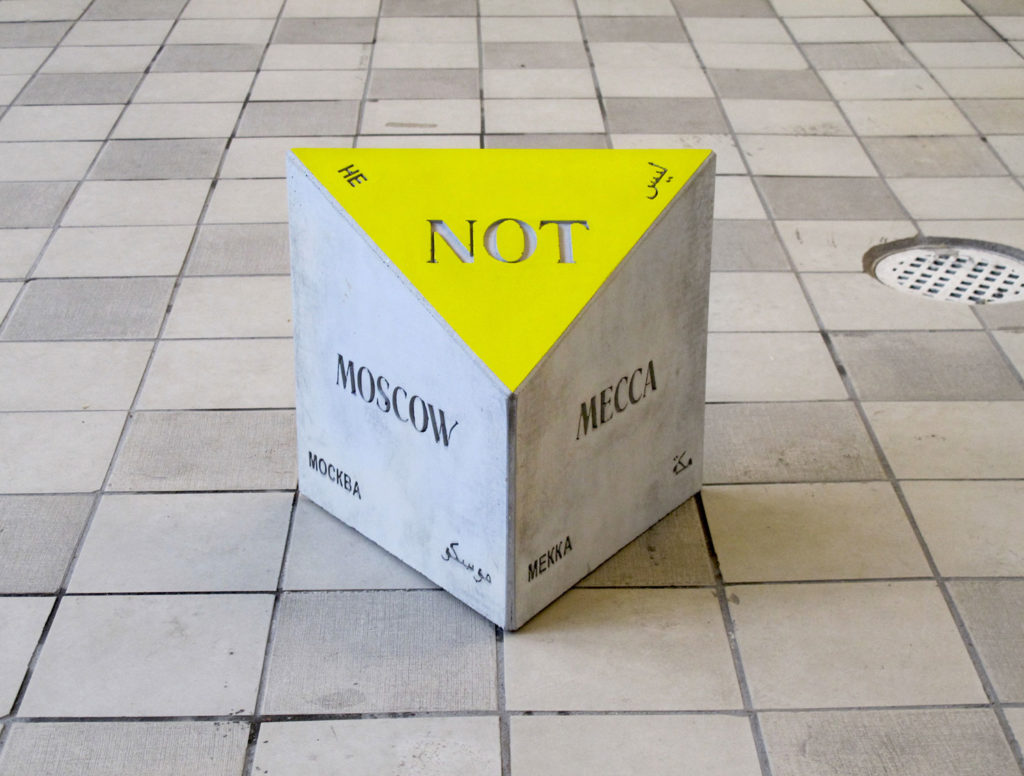– CLOSED – Call for Papers: Unpacking Residencies: Situating the Production of Cultural Relations [working title] – Kunstlicht Vol. 39 (2018), no. 2

“Everyone I’d encounter on my journey asked me: ‘Where are you based?’ I said: ‘On my feet.’ ‘Then where are your feet based?’ I say: ‘Feet are never based.’”
– Hiwa K, Pre-Image (Blind as the Mother Tongue), 2017
Proposal deadline: 28 January 2018
Issue release: October 2018
Editors: Herbert Ploegman & Nikos Doulos (guest editor)
In recent years, residency programs for artists and other cultural mediators have strongly multiplied. These residencies function as central nodes in the organization and distribution of professional development, artistic production, and the contemporary art market. They operate on the juncture of many contradicting forces, and can, as increasingly important ‘time-spaces’ in the art ecosystem, not be ignored when seeking to understand the nature and infrastructure of contemporary art today.
Nina Lübbren has argued that painters’ colonies in rural regions of Northern Europe served as nineteenth-century precursors to present-day residencies. Issues of mobility, isolation, and the quest for the untainted (rural) landscape thus have a long-standing history. Such artist colonies were, in fact, formative to the development of a discourse of cultural production that is shaped by geopolitics and place-making, as well as by the remodelling, capitalization, and idealization of the rural and the urban. As a part of this discourse, art residencies transmit various models of and for artists about their modes of operating in the field.
Pascal Gielen, in a keynote lecture at the symposium Residencies Reflected, discussed art residencies as agents “that [foster] consistent connections between […] the spheres of the domestic, civil, market, and one’s peers.” However, this fostering of cultural relations is simultaneously affected by neoliberalism’s accommodating and transforming tendencies, which should be taken into account when evaluating the merits of contemporary residencies.
W.A.G.E. (Working Artists and the Greater Economy) recently contributed to e-flux with an article that problematized artists-in-residence working conditions and their interconnection with modes of professionalization that feed, and are fed by, the corporate world. W.A.G.E. writes that ‘based-in’ artists “are wired-up, networked carriers of social and cultural capital set in perpetual motion, transforming cities in their passage through them on the art circuit –sophisticated nomadic clans who travel to survive.”
Elaborating on these perspectives, several questions arise: given the double claim that residencies and artists have on cultural production, to whom does cultural production actually belong and where does it reside? How is it woven into the global flows of artistic production? And how do residencies negotiate their particular ties to the globalized art market? Since these transactions are so multi-layered, the wider cultural relations that they nurture need to be closely examined. By wider cultural relations, we mean the connections between agents of all kinds, such as humans, objects, and the geographies that they occupy.
In accordance with these observations, in this upcoming issue of Kunstlicht we wish to critically address the current identities, roles, and significance of art residencies. We aim to unpack the stakes involved in perpetuating such models and examine the potential of these residencies to foster counter-narratives and subversive modes of cultural production.
Proposals (200-300 words) with attached résumés can be submitted until January 28, 2018 via redactie@tijdschriftkunstlicht.nl. Selected authors will be invited to write a 2,000 to 3,000-word paper (excluding notes). Papers may be written either in English or in Dutch. Authors who publish in Kunstlicht will receive three complimentary copies. Unfortunately, Kunstlicht is not able to provide an author’s honorarium. Two years following publication, papers will be submitted to the freely accessible online archive.
We also welcome image-based and experimental text contributions, as well as proposals for performances and events. We cannot, however, guarantee that all proposals will be given a stage and the editorial board reserves the right to decline contributions.
Nikos Doulos is a visual artist, curator, and co-director of Expodium in Utrecht – an urban do-tank investigating the role of the arts in urban transition areas. His interests lie with the investigation of new pedagogical modes for inclusive knowledge production framed under site-specific research trajectories. Walking plays a predominant part in his practice.
Herbert Ploegman is a writer, anthropologist, and curator, and editor for Kunstlicht. His main field of research is self-organization, and more recently art practices in relation to urban transformations in Athens, Greece.
Kunstlicht is an academic journal for visual art, visual culture, and architecture, founded in 1980. It is affiliated with the Arts & Culture department of the Vrije Universiteit Amsterdam, but operates from an independent foundation. Kunstlicht is published three times a year, and features both scholarly and artistic contributions.
